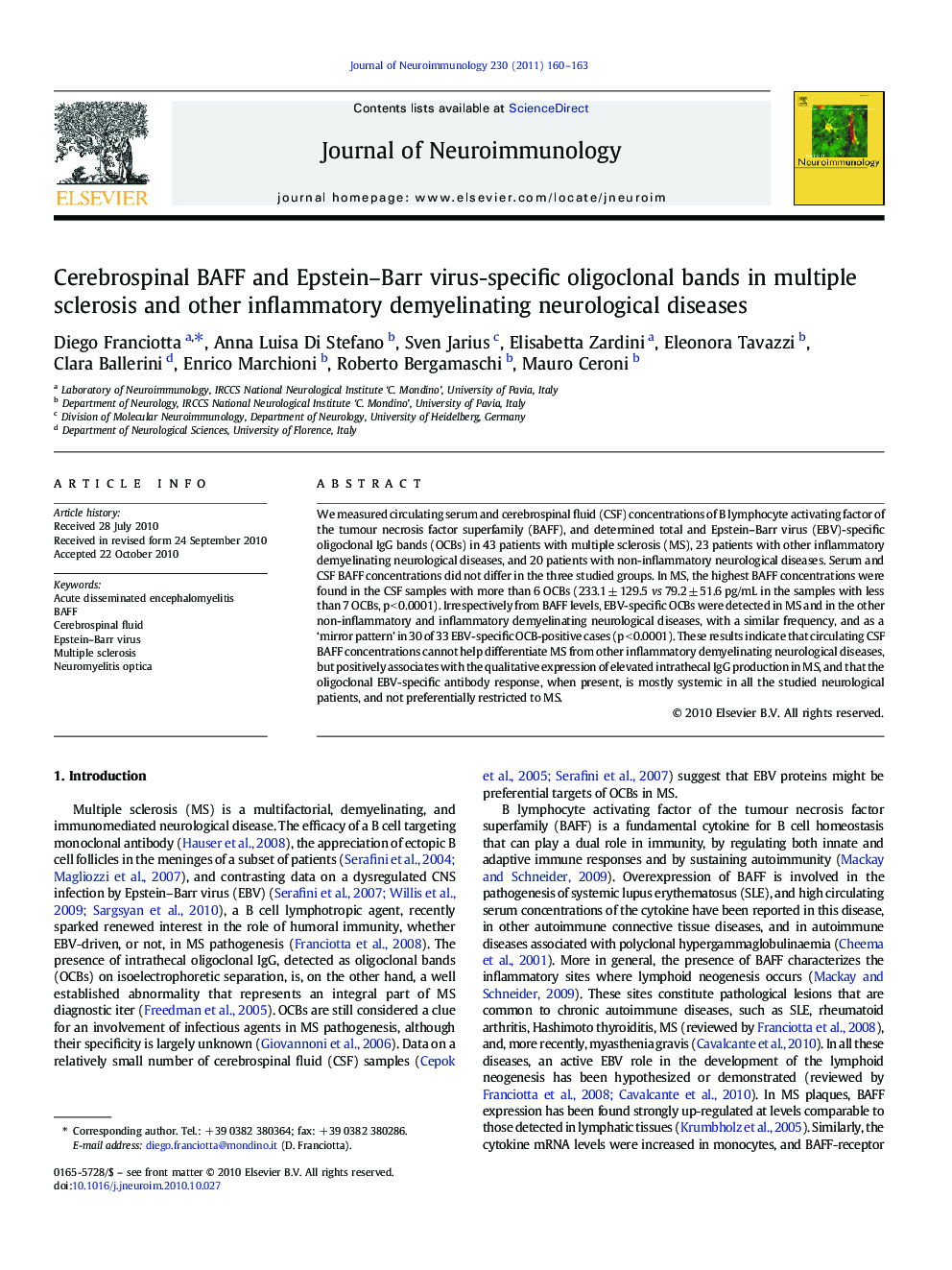| Article ID | Journal | Published Year | Pages | File Type |
|---|---|---|---|---|
| 3064463 | Journal of Neuroimmunology | 2011 | 4 Pages |
We measured circulating serum and cerebrospinal fluid (CSF) concentrations of B lymphocyte activating factor of the tumour necrosis factor superfamily (BAFF), and determined total and Epstein–Barr virus (EBV)-specific oligoclonal IgG bands (OCBs) in 43 patients with multiple sclerosis (MS), 23 patients with other inflammatory demyelinating neurological diseases, and 20 patients with non-inflammatory neurological diseases. Serum and CSF BAFF concentrations did not differ in the three studied groups. In MS, the highest BAFF concentrations were found in the CSF samples with more than 6 OCBs (233.1 ± 129.5 vs 79.2 ± 51.6 pg/mL in the samples with less than 7 OCBs, p < 0.0001). Irrespectively from BAFF levels, EBV-specific OCBs were detected in MS and in the other non-inflammatory and inflammatory demyelinating neurological diseases, with a similar frequency, and as a ‘mirror pattern’ in 30 of 33 EBV-specific OCB-positive cases (p < 0.0001). These results indicate that circulating CSF BAFF concentrations cannot help differentiate MS from other inflammatory demyelinating neurological diseases, but positively associates with the qualitative expression of elevated intrathecal IgG production in MS, and that the oligoclonal EBV-specific antibody response, when present, is mostly systemic in all the studied neurological patients, and not preferentially restricted to MS.
